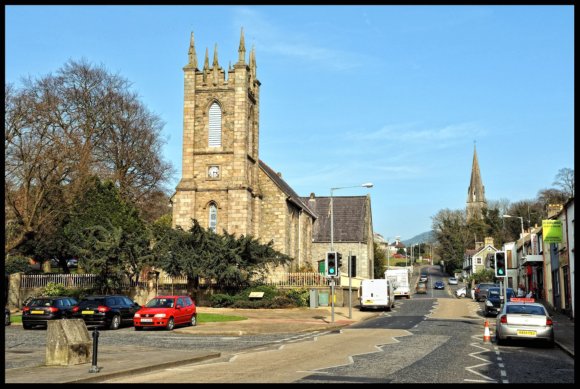|
Ros
Davies' Co.
Down, Northern Ireland Family History Research Site
© Rosalind Davies 2001 Permission granted to reprint research for non-profit use only |
Kilbroney parish
| Rostrevor town | Church of Ireland, Rostrevor | old Catholic church & graveyard |
| Catholic Church, Rostrevor | Killowen Catholic Church | Rostrevor Presbyterian Church |
Rostrevor town
on Carlingford Lough 1km SE of Newry
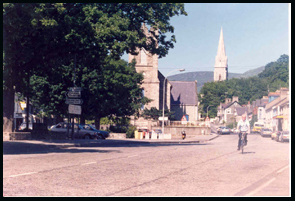 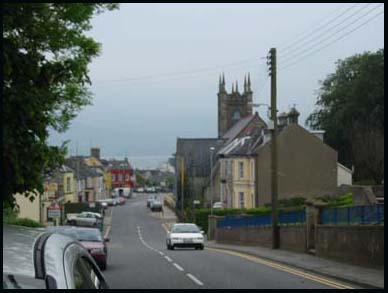 |
|||
| The church in the middle is the Church of Ireland and the spire is the distance (right) is St. Mary's Catholic church. The Parochial House is in town. The colour photo was taken in 1995 by Deirde McEvoy, who kindly forwarded it to me. | Rostrevor Church of Ireland spire looking towards Carlingford Lough from the Hilltown Road in Rostrevor. | ||
|
Rostrevor, formerly the seat of the Trevors, Viscount Dungannon in 1613, was called Rose-Trevor which name it received from the circumstance of Rose, daughter of Rev. Henry Ussher, Archbishop of Armagh, being married to Edward Trevor, Lord Viscount Dungannon. The property having afterwards come into the possession of the Ross family by purchase in 1690 , the name was changed to Rosstrevor The ancient name of this place was Carrickavraghad. In 1744 it was described as being
a small village having a new church then lately built. a small quay
for ships which ride at anchor within a few yards of the shore, also
a slat works and a pottery for white earthenware made of fine clay found
near Carrickfergus and frequently exported to foreign parts. In 1836
the area was wooded and the proprietor
was David Ross Esq. Lodge & Mrs. Ross, of Bladensberg. There was
a Total Abstinence Society in Church Street & Police Barracks in
Old Post Office Street in 1863. The population in 1910 was 806. Newspaper articles from Down
Recorder; Newspaper article from Newtownards
Chronicle; |
| References;V3 p 26, 27, 32 OSM: DR; ;MS WAG p63,64; NC; PNNI V1 p 152;GV; POD |
In the grounds of the ruined church, is an ancient inscribed cross, thought to date from the 6th century. Richard Hayward, writing in 1936, expresses the view that this cross marks the grave of St. Bronach who founded the convent and the face at the top of the cross is a representation of the foundress. There is another more ornate and skillfully executed cross in the graveyard with beautiful interlacing, which is reckoned to date from the 9th century. In the 1766 Religious Census, the minister was Rev. John Warnock. It is mentioned in the 'Ancient and modern state of Down' in 1744 that a the new church was built to replace the old one . This new church was described in 1836 as a plain, rectangular building measuring 60 feet by 25 feet and in bad repair and had been disused by 1821. The church in the photo was built in 1821 at a cost of £1,837 of which, £1,100 was a loan by the Board of First Fruits, £200 a gift by the same board and the remaining £537 by subscription of the congregation. A gallery was added in 1827 at an additional expense of £150, a vestry added in 1864 and a new roof in 1880. In 1836 it was described as a good building of stone with a square tower , situated in the upper part of the main street of Rostrevor. It could hold 350 people with an average attendance of 310 in summer. There is a monument in the church to Major- General Ross, the commanding officer of the 20th regiment of foot who fell 12th September 1814 in the attack on Baltimore. Another marble tablet was placed by Richard Jebb in memory of his nephew John Heyland McCormick who died in 1829, aged 23, when a gun exploded in Rostrevor Bay. The vicar in 1836 & 1846 was Rev. Edward John Evans and the curate was Rev. Benjamin Jacob. There was a Church Education Society School & teacher's house here in 1863. The rector in 1910 was Rev. T.W.E. Drury. The Ven. Edward Dupre Atkinson was rector of the parish for 35 years until his death in 1937 and although he was happy during his 12 year ministry, he found it somewhat different to his previous parish of Waringstown because , as he explains, "instead of a large population mainly consisting of weavers artisans and farmers, my flock here consisted of three or four substantial farmers and a certain number of small ones, some boarding-house keepers, tradespeople and servants, with almost all the residential gentry and villa folk of whom there was a very considerably number in the parish." Records from 1814 available |
||
| References;V3 p 27, 29,33, 36, 39, 40 OSM: MS WAG p 65; GIPR;GV; POD; MIs |
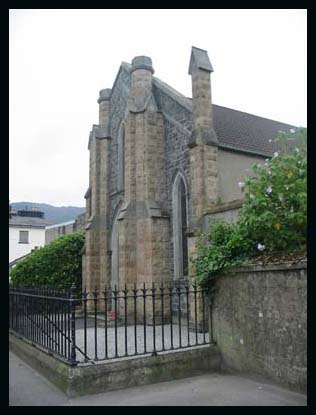 |
|
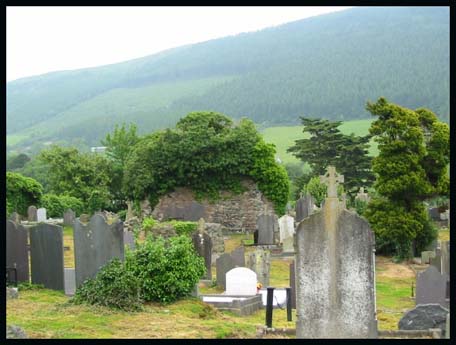 |
|
 |
|
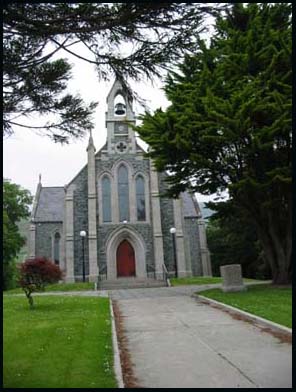 |
|
by Ros Davies
